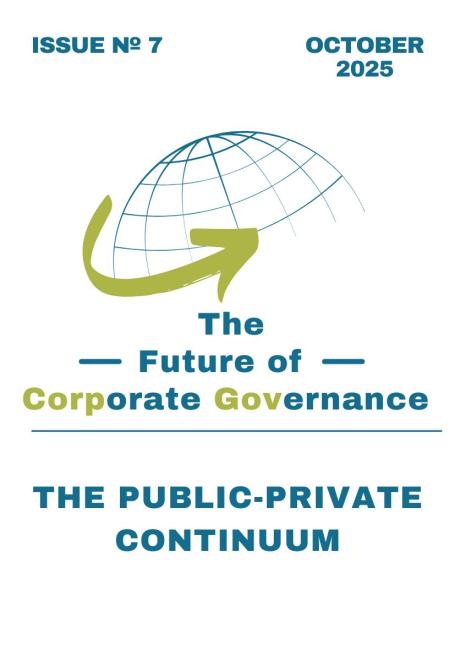
The ECGI blog is kindly supported by

Interview with Michelle Lowry on the new dynamics of private and public capital
This interview is based on the research of Professor Michelle Lowry, whose work explores questions related to corporate governance, private and public firms, and regulation. It draws particularly on her recent paper, “The Blurring Lines between Public and Private Firms.” Explore more of Michelle Lowry’s work here.
_________________________________________________
Your research highlights that the line between public and private markets is fading. What are the key forces driving this convergence?
Companies are staying private longer, growing larger and more mature while remaining privately held. This reflects several forces. One factor is the abundant supply of private capital, for example among venture capital, private equity, and other investment vehicles. This makes it easier for companies to raise substantial sums without going public. A second factor is the cost of disclosure. For firms that rely heavily on intangible assets or intellectual property, public reporting can reveal sensitive information to competitors. As the economy becomes increasingly knowledge-based, more firms fit this profile. These firms rationally stay private longer to protect their advantages.
These factors are unlikely to reverse soon, so we can expect companies to remain private for extended periods. Of course this would change if a major shock alters the balance between the benefits of public versus private status.
How does the trend of companies staying private longer matter for corporate governance?
As companies stay private longer, they grow larger and more complex, and their governance needs evolve. They require more diverse advice, for example regarding product lines, supply chains, mergers, and litigation. This drives demand for directors with varied expertise, and ultimately it leads to larger boards. In addition, as these private companies raise capital from multiple investors (VCs, private equity, mutual funds, hedge funds), insider ownership declines. This increases the need for independent oversight and monitoring, which leads to more independent directors, even before firms go public.
Many large private firms now adopt public-style governance before listing. What do you observe about this evolution?
In past time periods (for example, among companies going public in the 1990s), firms substantially changed their governance after going public, for example expanding board size and appointing more independent directors. In more recent years, more of this evolution occurs while firms are still private. Even without regulatory mandates, private firms are voluntarily aligning more and more with public standards.
Should private firms face stronger disclosure requirements?
This is a challenging issue. There is an inherent trade-off in disclosure. Greater transparency benefits investors and improves aggregate information, but at the firm level it can expose competitive secrets. Evidence suggests that stringent public disclosure rules deter some firms from listing. Stronger private-company requirements might have further unintended consequences, for example prompting firms to (1) relocate abroad or (2) restrain growth to remain below regulatory thresholds.
Institutional investors increasingly straddle both late-stage private and traditional public markets. How is this reshaping stewardship responsibilities, particularly around transparency and shareholder rights?
Stewardship differs sharply between these markets. The primary channel of stewardship in public firms is shareholder voting. In contrast, the primary channel in private firms is board seats and intensive operational engagement; these are often impractical or even illegal for many investors that increasingly invest in private firms, for example mutual funds and pension funds. As these “public-type” investors provide more private capital, monitoring may weaken. Limited disclosure compounds the challenge. If companies restrict information to certain subsets of investors, oversight becomes uneven and overall stewardship weaker. These are difficult trade-offs that deserve more research.
When mutual funds back late-stage private firms, does that democratize access for ordinary investors, or deepen the divide with retail capital?
In principle, it opens access, but in practice, exposure is small. Mutual funds typically invest 1% or less of a fund’s assets in private firms (by regulation, a maximum 15% of fund net asset value can be invested in private firms, but very few funds have as high as 5%, and a more common rate is 1% or less).
Moreover, private firms are risky, and while a few (like SpaceX or Stripe) succeed, most underperform. Mutual funds may face a “winner’s curse”, gaining access mainly to firms that VCs choose not to invest in. Incremental to this, mutual funds don’t always invest on equally favourable terms as venture capitalists.
In sum, retail investors have never been fully on par with institutions, and the widening private market likely increases that gap.
Are we heading toward a world where companies can “mix and match” capital sources and governance models — or will regulatory and investor demands eventually force more standardization?
It is fascinating to think about how these factors will evolve going forward. We already see growing secondary markets for private shares as employees seek liquidity. While these will never match public-market trading, they’re becoming more common. Similarly, as ownership in private firms becomes more dispersed, investors will likely demand greater transparency and some companies may voluntarily increase their disclosures, even without regulatory pressure.
I think that public and private will remain meaningful categories for the foreseeable future, but at the same time I also expect to observe more hybrid models.







